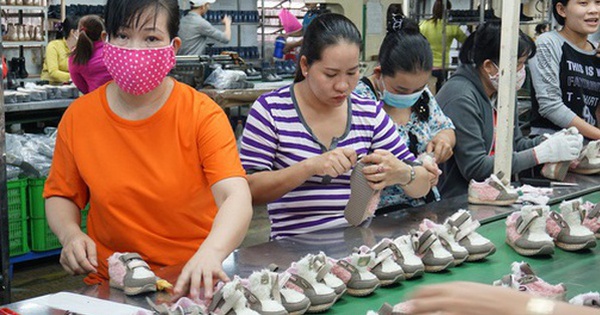It is difficult for American companies to move production closer to home
It will take many years for American businesses to have the same supplier networks and raw material sources as Asian manufacturing hubs.
US importers are looking to shift supplies from the Asia-Pacific region to Mexico and Latin America. However, experts say that the strategy of moving production to countries close to the consumer market (nearshoring) may cause them even more problems.
They will have to find suppliers with enough raw materials, production quality and the right network like the one established in China or Southeast Asia. Re-establishing that capacity and re-engineering the supplier pool according to a “closer” strategy will take years, experts say.
“China is undeniably the biggest market for all nuts and bolts, as well as anything,” said Kamala Raman, Gartner Vice President, which advises companies on supply chain networks. from basic to complex. You can’t replicate that ecosystem in any other country in the world.”

Workers at an Eaton Corp manufacturing facility in Mexico 2020. Photo: Bloomberg
James Hill – Senior Vice President of Global Sourcing and Supply Chain at Hollander Sleep Products (Florida, USA) said finding suppliers was a challenge. The bedding maker has long sourced from Mexico and Central America to prepare for future changes in the face of supply chain disruptions.
However, Hollander struggled to get materials like cotton and synthetics that were not too expensive compared to those produced on a large scale in China, Pakistan and India. These are the places where they are buying ingredients.
“Latin America doesn’t have the infrastructure to produce that kind of material at a very low cost,” he said, “To develop production in countries close to the consuming market and sourcing by region , we need to look at inputs and raw material availability.”
The supply chain disruption in the past two years due to the impact of the pandemic has led many Western companies to seek to shift production closer to home. The impetus for displacement is all the more powerful as congestion causes seaports to congest, store shelves empty, factories shut down and billions of dollars of goods trapped in overloaded distribution networks.
Nearshoring is supposed to make the supply chain more resilient to such shocks, by shortening processes, keeping shipments uninterrupted and reducing costs. Decades of shifting manufacturing operations to distant countries have left supply chains “complex and fragile, with central locations lacking, White House economists said in a recent report,” White House economists said in a recent report. flexibility and few substitutes”.
However, shifting supply chains that have built up over many years is a complex undertaking. Enterprises must take into account the availability and transportation of raw materials and components. “When we talk to companies, it’s still on their agenda,” said Ed Barriball at consulting firm McKinsey & Co. “However, the actual transition can be difficult.”
Omar Troncoso at consulting Kearney said it has seen an “incredible increase in the number of clients trying to “nearshore” over the past year. Mexico is a popular destination because of its proximity to the US. Mexico also has the same infrastructure. Floors and freight networks are available.
According to a recent Kearney survey of directors of US manufacturing companies, although 70% of CEOs have planned, are considering or are planning to move production to Mexico, only 17% have done so.
Many companies find capacity in Mexico limited. Certain equipment or components cannot be manufactured there, for example expensive molds for plastic goods that must be imported from China, Troncoso said.
“You really have to know the people in the industry and get to know the suppliers,” he says. “Honestly, you have to convince them that your business is good for them, and they should. invest in this business.
Since the US-China trade war broke out, Sirius Archery Products has been trying to find a location closer to high-quality carbon for its products. However, they have yet to find a supplier in Mexico, said Seth Poston, the company’s president.
Instead, they turned to Japan. Poston said that if they buy from a supplier in the US, they will have to increase the price of the product by 40%. “There are no options for us in Mexico,” he said.
Ngoc Thanh (according to the Wall Street Journal)
at Blogtuan.info – Source: vnexpress.net – Read the original article here



